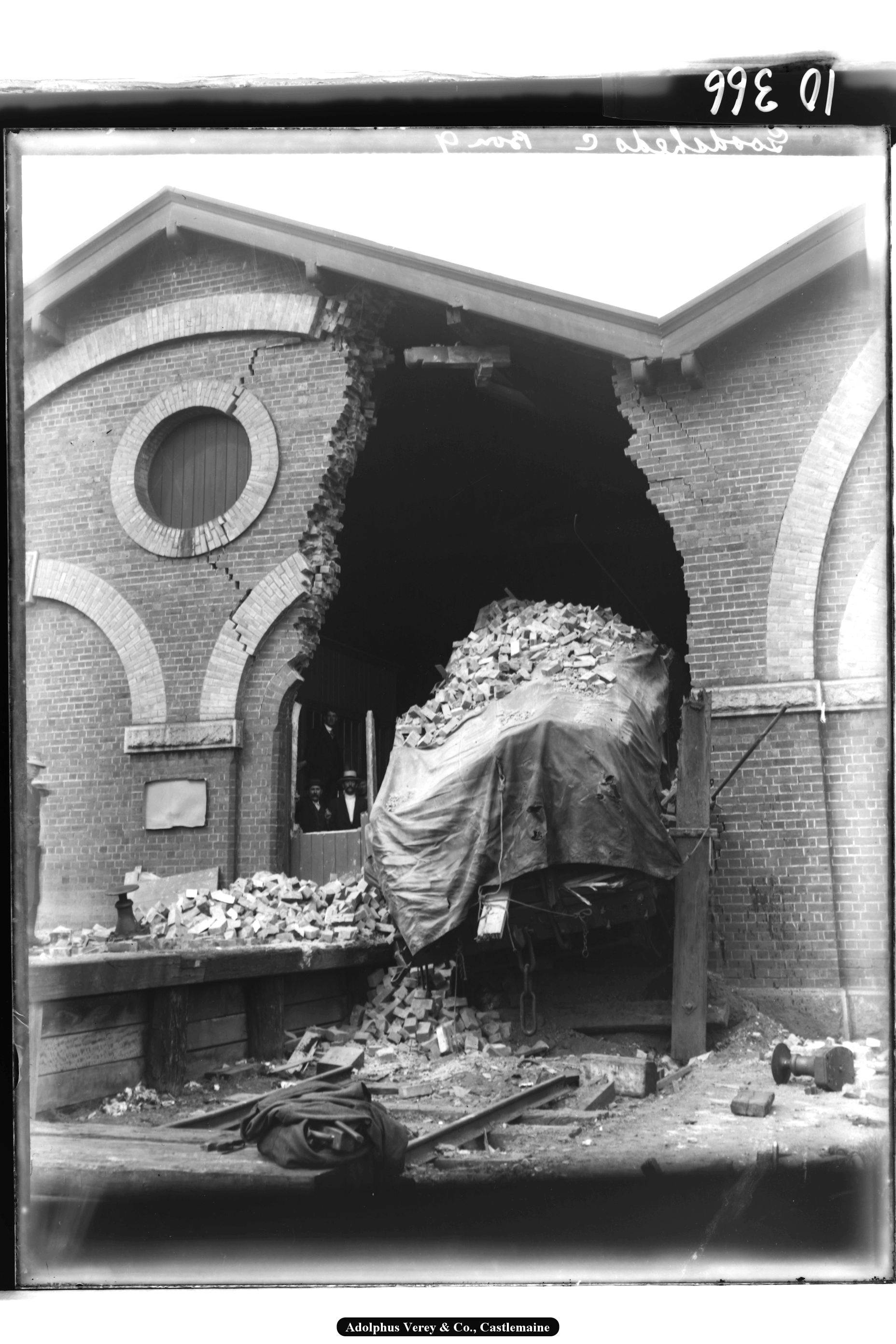Developing the Goldfields - The Castlemaine Railway Station
- Anthony Hemingway
- May 15
- 4 min read
By Anthony Hemingway
Located within the heart of Victoria's Goldfields region, Castlemaine Railway Station is a living relic born of the ambition, engineering prowess, and shifting economic tides of mid-19th century Victoria.
The discovery of gold at Mt Alexander in 1851 transformed the post-colonial pastoral landscape of central Victoria into one of the most vibrant goldfields in the world. Recognising the economic and strategic importance of connecting this gold-rich interior to Melbourne’s ports, the Victorian Government commissioned the construction of the Melbourne to Echuca line, known as the Murray Valley Railway. Castlemaine, thanks to its centrality, wealth, and political influence, was chosen as a key junction on the route.

Although initially planned and partially commenced by a private company, the Melbourne Mount Alexander and Murray River Railway Company, the railway’s construction was taken over by the government after financial difficulties. In response, the Victorian Railways Department was formed in 1856 to oversee the line’s completion, becoming the Colony’s largest capital works project of its time.
The department’s first engineer-in-chief was George Darbyshire who pioneered the use of English construction standards in Victoria. There was much debate at the time about the application of English versus American standards. The former, also referred to as ‘heavy’ or ‘first-class’ construction, prioritised durability and robustness utilising stronger materials such as stone and brick and undertaking substantial earthworks to create strong trackbeds. The American, or ‘light’ construction, preferenced speed of construction over durability and therefore, featured timber structures and limited earthworks.
Under the Department, the Melbourne to Echuca line was opened in five stages from 1859 to 1864 with Castlemaine Station officially opened in 1862.
The chosen station site was situated along the often-flooded Barkers Creek and was riddled with remnants of gold diggings. Extensive earthworks were needed to stabilise the terrain, with over 100 workers engaged just to complete the footings for the goods shed. The area referred to as ‘the Hollow,’ a depression within the hillside, was formed as a result of these earthworks. Barkers Creek was also straightened in 1864, broadening the station site and reducing the flood risk.
The initial phase of development included the main station building, a lamp room (later converted into toilets), the goods shed, and vital rail-overbridges and viaducts.
These structures, built to English engineering standards were constructed in brick and basalt and featured symmetrical planning and Italianate architectural elements (rusticated quoining and corbelled eaves) in what railway historian Andrew Ward described as the ‘Castlemaine style.’
Castlemaine's station continued to expand as the railway network grew. By 1874, the Maryborough line was completed, followed by the opening of the Maldon branch in 1884. This boom period saw the introduction of new sidings, the platforms extended, signal boxes and pedestrian subway constructed. Castlemaine was upgraded to a first-class station at this time, reflecting its growing importance.
The depression following the collapse of the land boom in the late 1880s and early 1890s saw continued development of the station site stagnate. Plans to upgrade passenger amenities and the yard were largely put on hold until the 1910s due to funding and in spite of complaints. One such complaint, published in the Bendigo Independent in January 1913, described the situation as such:
All travellers, especially ladies, have long recognised that the Castlemaine station has been the very acme of perfection as to how things can be made uncomfortable and inconvenient... a cup of tea required a trek across platforms, down steep steps and through a subway.
Between 1914 and 1916, the station precinct underwent a comprehensive redevelopment to accommodate increased passenger and freight demands. This included the construction of a new island platform building, an upgraded signal system with a 88-lever frame, formal landscaping, and the extension of platforms to accommodate larger trains. The island platform building, completed in 1914, contained a refreshment room, toilets, and a booking office that had been the focus of the complaint in 1913. It was during this phase that the western bay of the goods shed was also demolished to make way for additional sidings.
The mid-20th century, however, saw the car become the primary mode of transport and the use of railways decline. Following the 1971 Bland Report, which recommended rationalising Victoria’s rail network, many less-profitable branch lines, including those to Maryborough and Maldon, were closed. As a result, traffic through Castlemaine station declined, and several structures, including signal boxes, turntables, and footbridges, were decommissioned and some demolished.
In 1976, local railway enthusiasts formed the Castlemaine and Maldon Railway Preservation Society. Their work led to the reconstruction and reopening of the Maldon line as a tourist attraction, the Victorian Goldfields Railway.
The Castlemaine Railway Station Precinct was added to the Victorian Heritage Register in 1999 (H1664) in recognition of its historical, scientific, and architectural significance. Its continuous use for over 150 years further reinforces its importance as one of Victoria’s earliest railway station developments. In 2023, RBA Architects + Conservation Consultants prepared a Conservation Management Plan (CMP) for the precinct and the Goods Shed. These documents provided a detailed assessment of the precinct’s heritage significance and outlined policies to guide its future conservation and use. In 2023, Mount Alexander Shire Council adopted the Masterplan for the precinct, informed by the CMP, which integrates heritage values into a broader strategy to support tourism, celebrate local identity, and contribute to the cultural and economic vitality of Castlemaine.































Comments